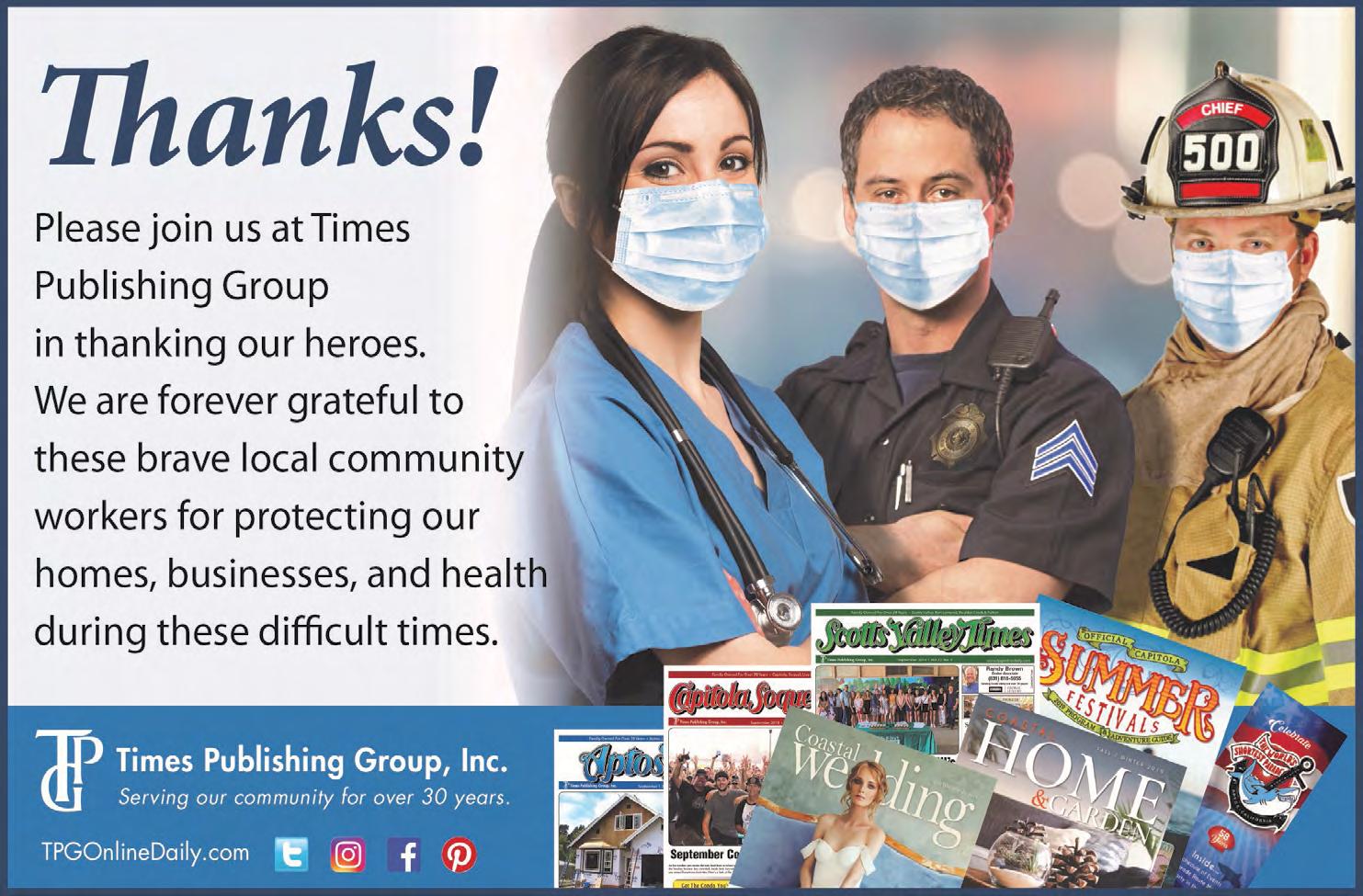
4 minute read
Distinguish Your Symptoms
DISTINGUISH YOUR SYMPTOMS Why It’s So Hard To Tell if It’s COVID-19 or Something Else
Ronda Hatcher RN, BSN, CIC Director of Infection Prevention and Employee Health Services
Advertisement
Colds, Influenza (Flu), and COVID-19 are all contagious respiratory illnesses, but they are all caused by different viruses. COVID-19 is caused by a new coronavirus called SARS-CoV-2, while flu is caused by infection with influenza viruses. There are more than 200 viruses that can cause a cold, but rhinoviruses are the most common type.
Due to the variable nature of these illnesses, this means the only way to know whether you are infected is to get a COVID-19 test. Use this handy chart to help distinguish your symptoms.
COLD vs FLU vs COVID-19
Signs & Symptoms Cold Influenza (Flu) COVID-19*
Asymptomatic
Symptom onset
Never Gradual; symptoms peak within 2-3 days and last for up to 10 -14 days Never Abrupt;typically symptoms develop 1-4 days after infection
Common Gradual or abrupt, with symptoms typically starting 5 days after being infected but can range from 2-14 days Fever Rare Usual; lasts 3-4 days Usual Aches Slight Usual; often severe Usual; often severe Chills Uncommon Fairly common Fairly common Fatigue, weakness Sometimes Usual Usual Sneezing Common Sometimes Sometimes Chest discomfort, cough Mild to moderate; hacking cough Common; can be severe Common; can be severe Stuffy, runny nose Common Sometimes Sometimes Sore throat Common Sometimes Sometimes Headache Rare Common Common Vomiting and diarrhea Rare More common in children than adults More common in children than adults Change or loss of taste or smell Not applicable Not applicable Common *While more is learned every day, there is still a lot that is unknown about COVID-19 and the virus that causes it. Unfortunately, it is possible to catch the Flu, a cold, and COVID-19 at the same time and only a test will confirm if you are infected.
What can you do to keep both you and your lungs healthy?
Social distance
Listen to the advice of public health experts! Wear a mask, stay six feet from others, and meet outside.
Wash your hands
Use soap and water or hand sanitizer and rub it vigorously into all areas of your hands and fingers.
Get your flu shot
Although we are all anxious for a COVID-19 vaccine, until it is available the best thing you can do now to protect your health is to get the flu vaccine.
Clean and disinfect high touch surfaces
To avoid spreading germs, frequently disinfect items like doorknobs, cell phones, and light switches.
Stay hydrated
Proper hydration keeps your lungs lubricated so that irritants and mucus thin out. Aim for drinking half of your body weight in ounces of water. For example: if you weigh 150 pounds, drink 75 ounces, 9 cups, of water per day.
Make healthy food choices
To reduce inflammation in your body chose foods high in vitamins and antioxidants like fruits, vegetables, and omega-3 rich choices including apples, wild salmon, green tea and black coffee, raw seeds and nuts, broccoli, cauliflower, brussel sprouts, oranges and orange vegetables like pumpkin, and garlic.
Prioritize sleep and exercise
Exercise improves the flow of oxygen to your muscles, heart, and lungs. Aim for thirty minutes of moderate exercise five times per week. Sleep plays an important role in your physical health, too. While you sleep, your body works on repairing itself, including your heart, lungs, and blood vessels.
Soothe a sore throat
It is important to soothe a sore throat so that irritation doesn’t migrate down to the lungs. Drink warm liquids like water with a squeeze of lemon or green tea. Warm liquids not only soothe the throat but also increase hydration and the flow of gastric juices in the stomach, helping reduce inflammation.
Take care of your teeth
Just like your parents always told you, brush and floss twice per day to prevent the buildup of plaque and potential infection in your mouth. These could migrate from your mouth into your lungs.
Try to avoid pollution, allergens, and irritants
As much as you can, reduce your exposure to aerosols and sprays like cleaners and hairsprays, pollens, and smoky environments, which can increase inflammation in your lungs.
Avoid smoking
Inhaling anything other than air into your lungs causes them to become inflamed, which can cause mucus to build-up, decreasing oxygen in your bloodstream.
Practice Better Breathing

Diaphragmatic breathing and pursed-lip breathing
techniques are helpful to make your lungs more efficient. These techniques can reduce your heart rate and blood pressure along with calming your nervous system by eliciting a parasympathetic “relaxation” response in the body.
Give diaphragmatic breathing a try:
1.
2.
3.
4. Sit in a comfortable position and relax the muscles in your shoulders, neck, and jaw. Place one hand on your stomach and the other hand on your chest. Breathe in slowly through your nose for a count of three, noticing your abdomen expanding while your chest remains relatively still. Exhale for a count of six, allowing your abdomen to gently fall.
You could also add pursed-lip breathing:
1.
2.
3. First, start with proper diaphragmatic breathing by inhaling through your nose for three seconds. Next, pucker or purse your lips as if you are blowing on hot soup or blowing someone a kiss. Exhale for a count of six. A normal ratio of inhalation to exhalation is roughly 1:2, meaning inhale for three seconds, and exhale for six.
For long term benefits, practice these breathing techniques two to three times daily for five minutes at a time.
Remember, if you are struggling to breathe, seek help immediately rather than attempting to manage symptoms at home.



